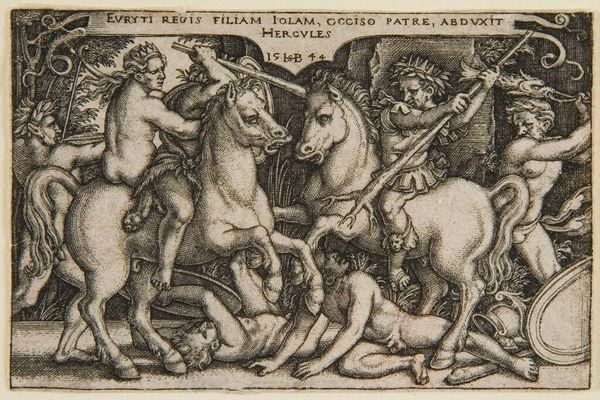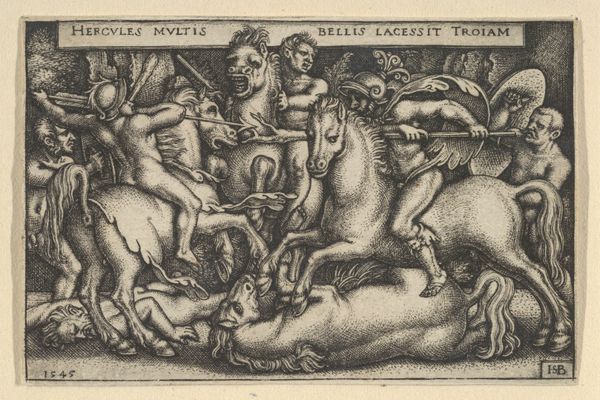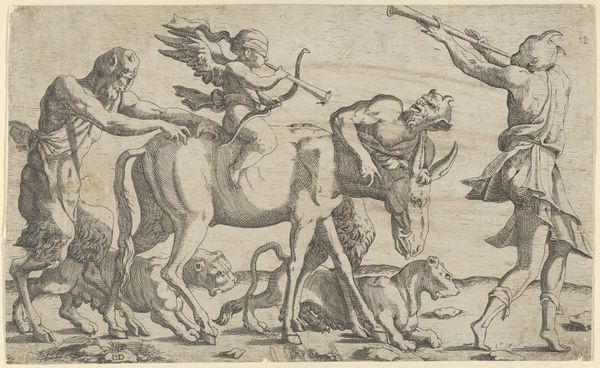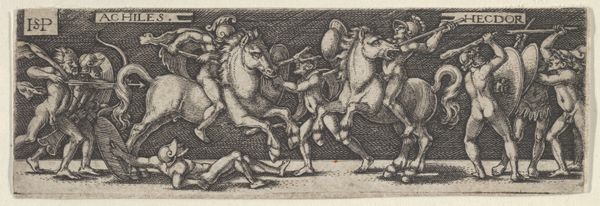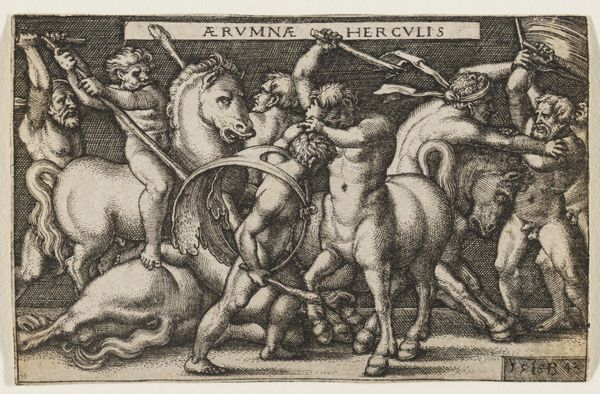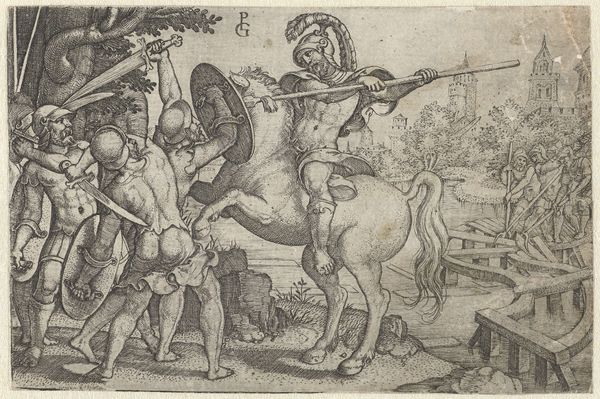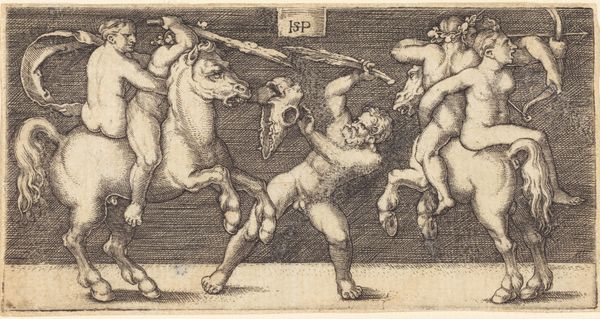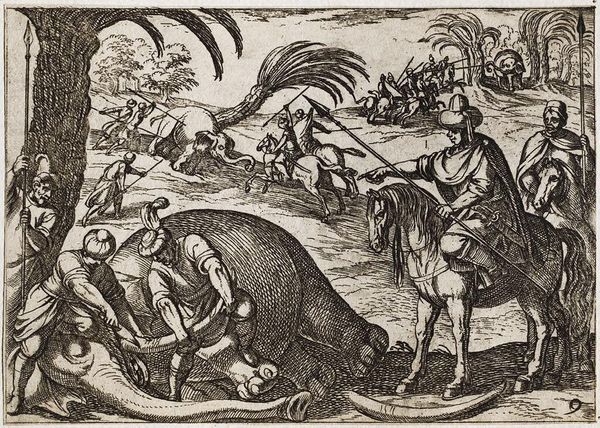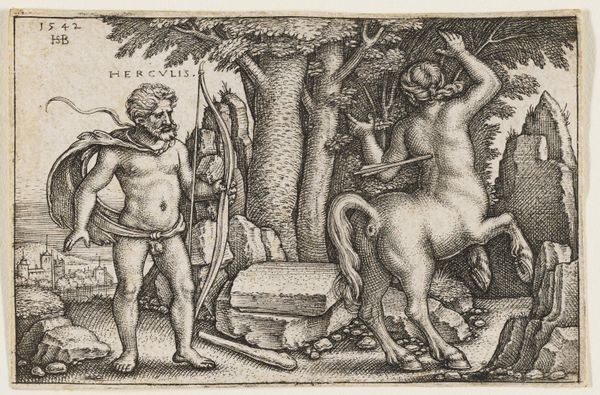
print, engraving
#
narrative-art
# print
#
figuration
#
11_renaissance
#
history-painting
#
engraving
Copyright: National Gallery of Art: CC0 1.0
Curator: What strikes me immediately about this image is its intensity. It's this incredibly busy scene, teeming with bodies, horses rearing up, and figures locked in some desperate struggle. Editor: Absolutely. We’re looking at "Hercules and Iole," an engraving dating back to 1544 by the German artist Sebald Beham. And your impression aligns perfectly with its narrative of abduction and conflict. Curator: Abduction! Right. I get lost in the visuals and forget the stories these works are telling. So, it's Hercules, he's not looking too heroic here, stealing Iole after killing her father. Seems like a bit of a trope, doesn't it? Powerful men doing as they please. Editor: Indeed, this print serves as a powerful example of how historical and mythological narratives have often normalized violence against women, and the glorification of conquest. It prompts reflection on power dynamics that resonate across centuries. Beham captures this moment where individual desires, Hercule's desire for Iole, overshadow the principles of justice, perpetuating the patriarchal status quo. Curator: Thinking of Iole's perspective makes it more visceral. How terrifying it must have been to be swept away like that! Is that what Beham wants us to think about, do you reckon? The fear? It's certainly a lot of detail. Editor: Perhaps. But one interpretation certainly focuses on Beham illustrating the pervasive imbalance of power. It is a print but could just as easily be propaganda—demonstrating an established authority's rights. Curator: It's kind of breathtaking though, isn't it? In a messed-up way. I mean, the dynamism, the swirling composition. There's a real mastery in controlling such a small space, everything pulls you around. It seems he’s relishing rendering flesh and horses’ muscles, it almost borders on fetishistic… Editor: You know, it's through such nuanced renderings of conflict that the engraving captures the fraught intersections of violence, desire, and dominance, and speaks volumes on both past and present attitudes towards power imbalances. The micro-aggressions contained inside one woodblock. Curator: It’s an extraordinary distillation of so many difficult ideas! Editor: Yes, Beham’s print acts as a reminder.
Comments
No comments
Be the first to comment and join the conversation on the ultimate creative platform.
